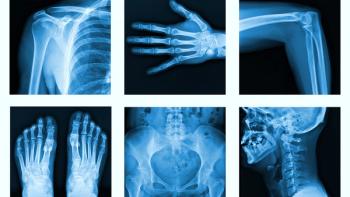
- BioPharm International-09-01-2008
- Volume 21
- Issue 9
Protecting Patents for Personalized Medicine
There are several challenges associated with protecting patents for personalized medicines.
Personalized medicine uses various types of diagnostic information to improve outcomes and reduce healthcare costs by determining in advance whether a patient is likely to respond to a proposed treatment.
Michael J. Shuster
Of course, the best-known and earliest success of the use of diagnostics in personalized medicine relates to measuring HER2/neu amplification in breast cancer patients. Only those patients whose tumors carry this amplification respond to Herceptin (trastuzumab), and the drug's use is indicated only in such patients. Current study results indicate that treatment for a year reduces risk or recurrence by half in these patients.1 The cost of Herceptin treatment is about $3,000 per month and is easily justified because of the benefits it provides.
NEW CHALLENGES IN PATENT PROTECTION
Getting patent protection for such diagnostics, however, recently became more difficult. The United States Patent and Trademark Office (USPTO) has made it difficult to obtain patent protection for certain types of personalized medicine technology. Unlike the test used for distinguishing Herceptin responders, i.e., a simple measurement of amplification of a single gene, other personalized medicine diagnostics require measuring gene or protein levels for a number of biomarkers. These measurements are used with sophisticated predictive modeling algorithms to generate a score associated with drug response or disease severity. One difficulty encountered in obtaining effective patent protection for this type of diagnostic arises from the ability to use various combinations of biomarkers to develop equivalent predictive models.
For example, while the expression of a handful of genes can be used in any particular predictive model, those genes can often be selected from a larger set of informative biomarkers. Consider a situation in which gene expression analysis identifies 30 genes whose expression significantly differs between identified groups of responsive and nonresponsive patients. Informative predictive models are generated using expression values for four or more genes. Consider further that many combinations of four genes out of the 30 provide good predictive power in the model. Ideally, a patent application would claim a method of determining the efficacy of the treatment by measuring the expression of four or more of the 30 genes and including those values in the predictive model. Such a patent claim encompasses 27,405 different combinations of genes. Because this is such a large number, a patent examiner may object that the large number of combinations creates an undue search burden for the examiner.2 Consequently, the examiner issues a "restriction requirement" that causes the applicant to choose one combination of, in this example, four or more genes whose expression values are used in the claimed method. Claims to other combinations would then need to be pursued in separate patent applications, raising the cost of protection to unaffordable levels.
This creates a difficult position for the patent applicant. If many combinations of four or more of the 30 genes are provided adequate predictive power, a patent for a single combination of four provides essentially useless patent protection. If restriction among each combination is required, the applicant is forced to choose which of the many combinations it developed and disclosed will it protect. The combinations that it cannot afford to protect can be used by competitors to develop essentially equivalent tests that are not protected by the applicant's patents.
STRATEGIES TO SOLVE THE CLAIMS PROBLEM
One potential solution to this problem may be revealed by additional statistical analysis of the identified genes. Such analysis may show that the 30 identified genes are not all equally predictive. Faced with a choice among many combinations, an applicant can select a subset of combinations that provide the most informative predictions for protection. Those combinations left unprotected, if carefully selected, would only allow competitors to produce inferior products unlikely to effectively compete in the marketplace with the patented tests.
Another potential solution relies on identifying subgroups of genes whose expression levels co-vary, making them natural substitutes for each other. Thus, the 30 genes may segregate into five subgroups—the members of which provide essentially equivalent information in the predictive model. Such analysis also may show that not all of the subgroups are equally predictive when input into the model. In such an instance, it may not be necessary to claim the product as testing any four of the 30 identified genes. Instead, the claim can be drafted in the form a combination of genes selected from these subgroups, using a common claim form known as a Markush group.3 A claim can be drafted as choosing five genes, one from each of the five subgroups. Additional analysis may show that if a gene from the most predictive subgroup, A, is chosen, expression of only two other subgroup genes is necessary for the model to be informative. Thus claims would also be drafted to choosing one of the genes in A and then two others from the various combinations available from the remaining 4 subgroups. Further analysis may show that even lacking a gene from the most predictive subgroup, using three or four genes from the remaining subgroups, B–E, yields an informative result. Therefore, claims should be drafted to combinations that use only genes from B–E. Those claims protect against competitors working around the ideal product using the most predictive genes.
The USPTO, however, has proposed new rules limiting the use of Markush groups. Under the new rules, 37 CFR 1.140 would be amended to require that all species encompassed by a claim that recites alternatives (i.e., a Markush group claim) "meet at least one of the following two conditions: (1) share a substantial feature essential for a common utility, or (2) are prima facie obvious over each other." Fed. Reg. 72(154):44997. The proposed method of diagnostics outlined above would meet even these new criteria. The grouping of claims would be done because they co-vary in response to a given criteria. As such they "share a substantial feature essential for a common utility." Also, because they co-vary, it could be argued that it is obvious to substitute one member of the group for the other.
Another option to address the undue search burden issue is for an applicant to request expedited examination from the USPTO. This route requires that the applicant provide a prior art search to the examiner. It allows for practitioners to develop search strategies for these new inventions and by submitting those search results to the USPTO, help the USPTO develop its search procedures for these inventions. The search strategy for such inventions can be divided into two broad categories—one where the genes being tested have previously been associated with the disease or therapy for which the predictive model was developed and another where the genes have not been previously associated with that disease or therapy.
If the biomarkers have been previously associated with the disease or therapy, the most likely rejection from the USPTO would be that the invention is obvious. Obviousness rejections can be overcome by evidence of unexpected results. In the case of many predictive models, even if some or all of the biomarkers whose expression is being input into the model have been associated with that particular disease or therapy, the predictive model using multiple biomarkers is likely to be more powerful than predictions derived using any single biomarker. This gives a basis for arguing that the combination provides unexpected results, and therefore, is non-obvious.
In the case where the biomarkers have not previously been associated with the disease or therapy, the search strategy is simpler. The search should be structured to determine whether any of the claimed biomarkers have been associated with the disease or therapy for which the predictive model has been developed. A favorable search result should permit the issuance of broad claims to predictive models using combinations of novel biomarkers for predictive modeling of the therapy or disease with which they have previously not been associated.
Although there certainly are challenges associated with protecting these types of personalized medicine inventions, experienced patent counsel can enhance the ability of personalized medicine companies to capture appropriate claim scope.
Michael J. Shuster is a partner at Fenwick & West LLP, San Francisco, CA and Pauline Farmer-Koppenol is an associate at Fenwick & West LLP, Mountain View,CA, 415.875.2413,
REFERENCES
1. Mayo Clinic Staff Herceptin: Novel therapy targets HER2-positive breast cancer. 2007 Oct 6.
2. Manual for patent examination and prosecution (MPEP) § 803.
3. MPEP § 2173.05(h).
Articles in this issue
over 17 years ago
Minimizing the Problem of OOSover 17 years ago
The Company at the Crossroads. Part 1: To Commercialize or Not?over 17 years ago
Global Manufacturing Challenges Industry Regulatorsover 17 years ago
The Art of the Dealover 17 years ago
The Outlook for Quality by DesignNewsletter
Stay at the forefront of biopharmaceutical innovation—subscribe to BioPharm International for expert insights on drug development, manufacturing, compliance, and more.




